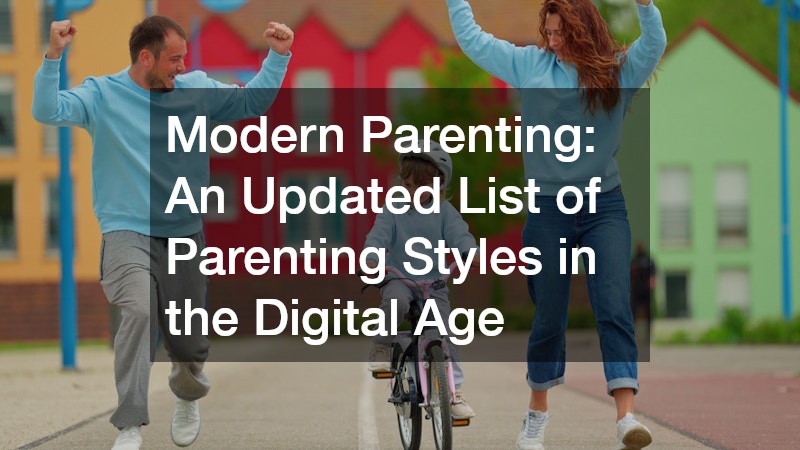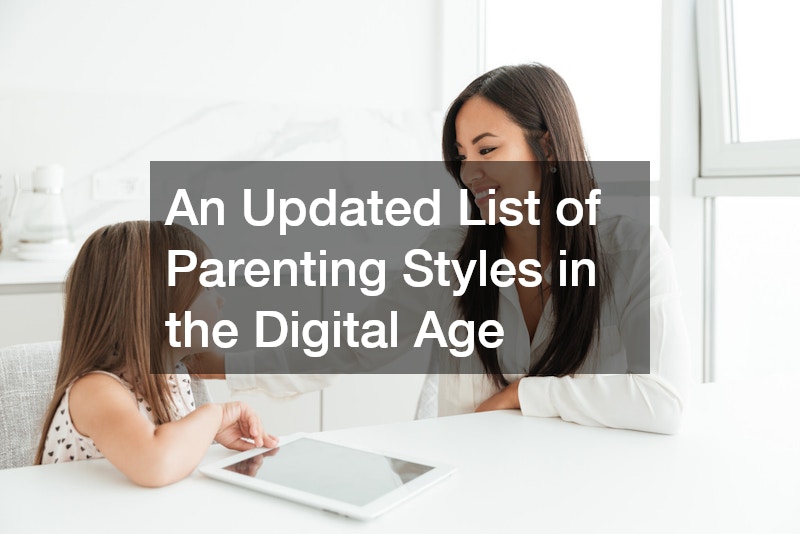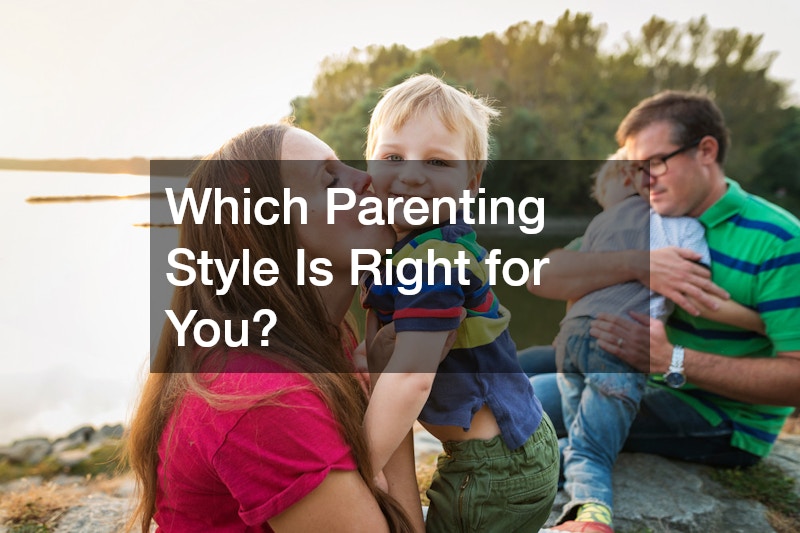Parenting has always been a journey filled with love, growth, and challenge. But in the digital age, raising children has taken on new dimensions. Screens are ever-present, social media influences behavior, and parenting philosophies evolve rapidly to adapt to new realities. While traditional parenting styles still play a role, modern approaches offer nuanced perspectives that reflect contemporary lifestyles. For parents and soon-to-be parents, understanding these updated parenting styles is essential in shaping nurturing, resilient, and independent individuals.
In this article, we explore an updated list of parenting styles that have emerged or gained traction in the digital age. We’ll also revisit the traditional framework of parenting to help you understand how modern styles have adapted from it. Whether you’re raising a toddler, a tech-savvy teen, or preparing to welcome your first child, this guide is for you.
What Are the Traditional Parenting Styles?
Before we explore the new trends, it’s important to understand the foundational framework laid out by developmental psychologist Diana Baumrind in the 1960s. These styles have been widely studied and form the basis of most parenting theories today:
- Authoritative: High warmth, high expectations. Parents set clear rules but remain responsive and open to communication. Often considered the most balanced and effective style.
- Authoritarian: Low warmth, high expectations. Parents enforce strict discipline with little room for discussion or emotional nurturing.
- Permissive: High warmth, low expectations. Parents are indulgent and often avoid setting firm boundaries.
- Neglectful/Uninvolved: Low warmth, low expectations. Parents are detached and provide minimal attention, guidance, or structure.
These styles are still relevant today, but they don’t fully address the complexities of raising children in a digitally connected, fast-paced world.
How Has the Digital Age Changed Parenting?
The internet, smartphones, and social media have fundamentally reshaped how families interact, how children learn, and how discipline is handled. Today’s parents face new questions:
- How much screen time is too much?
- Should I monitor my child’s social media?
- Is it okay to post photos of my child online?
- How do I teach emotional intelligence in a world of instant gratification?
These concerns have led to the development of more flexible, tech-conscious, and emotionally aware parenting styles. Many parents now blend traditional methods with modern techniques, creating hybrid approaches tailored to individual family needs.
An Updated List of Parenting Styles in the Digital Age
1. Gentle Parenting: The Empathy-First Approach
Gentle parenting emphasizes empathy, respect, and understanding. Rather than punishing bad behavior, it focuses on emotional connection and collaborative problem-solving.
Key traits:
- Validates children’s emotions
- Promotes open communication
- Avoids punishment and rewards systems
Best for: Parents who want to build trust and teach self-regulation.
Challenges: Can be time-consuming and may be perceived as overly lenient by others.
2. Conscious Parenting: Raising Self-Aware Parents and Children
Conscious parenting is rooted in the idea that parenting is a journey of self-growth. It encourages parents to become aware of their triggers and past experiences to avoid projecting them onto their children.
Key traits:
- Focuses on mutual emotional growth
- Encourages mindfulness
- Emphasizes presence and connection
Best for: Parents interested in personal development and emotional intelligence.
Challenges: Requires a deep level of self-reflection and ongoing inner work.
3. Attachment Parenting: Building Strong Emotional Bonds
Attachment parenting is based on the principle that strong emotional bonds during infancy and early childhood lay the groundwork for healthy development.
Key traits:
- Baby-wearing, co-sleeping, and extended breastfeeding
- Responsive caregiving
- Close physical and emotional proximity
Best for: Parents who want to foster deep emotional security.
Challenges: Can be physically and emotionally demanding; not always practical for working parents.
4. Helicopter Parenting: The Over-Involved Style
Helicopter parenting describes parents who hover over their children, often over-managing every aspect of their lives.
Key traits:
- High involvement in academics and extracurriculars
- Quick to solve problems for children
- High anxiety about child safety
Best for: Parents who prioritize structure and safety.
Challenges: Can hinder independence and resilience in children.
5. Free-Range Parenting: Encouraging Independence
Free-range parenting is a counter-response to helicopter parenting. It promotes autonomy and lets children learn through experience.
Key traits:
- Children walk to school, play outside unsupervised
- Encourages decision-making and problem-solving
- Focuses on natural consequences
Best for: Parents who value independence and self-reliance.
Challenges: Often misunderstood as neglect; may clash with societal norms.
6. Digital-Aware Parenting: Navigating the Screen World
This style has emerged as a direct response to the impact of technology on children’s development. Digital-aware parents are intentional about how their children interact with screens and tech.
Key traits:
- Sets screen-time boundaries and tech-free zones
- Teaches digital literacy and online etiquette
- Actively monitors or guides internet use
Best for: Parents navigating the challenges of raising digital natives.
Challenges: Requires staying updated on tech trends and setting consistent boundaries.
7. Lighthouse Parenting: Balancing Guidance and Freedom
Coined by Dr. Kenneth Ginsburg, lighthouse parenting encourages parents to be a stable guiding light — present and supportive, but not controlling.
Key traits:
- Provides a strong moral and emotional foundation
- Allows room for failure and learning
- Encourages resilience and adaptability
Best for: Parents looking for a middle ground between structure and freedom.
Challenges: Requires trust in your child’s ability to navigate life independently.
8. Snowplow Parenting: Clearing Obstacles Ahead
A modern evolution of helicopter parenting, snowplow parents go to great lengths to remove any potential challenges before their children face them.
Key traits:
- Proactive problem-solving
- Heavy involvement in school and social matters
- Focused on securing success and comfort
Best for: Highly ambitious families.
Challenges: May inhibit a child’s problem-solving and coping skills.
9. Slow Parenting: Embracing Simplicity and Presence
Slow parenting is a reaction against the hyper-scheduled, fast-paced lifestyle many families lead today. It emphasizes living in the moment and allowing children to explore at their own pace.
Key traits:
- Unstructured play and outdoor activities
- Prioritizes quality time over productivity
- Less reliance on screens and organized programs
Best for: Families seeking balance and mindfulness.
Challenges: It may be difficult to implement in competitive or urban environments.
10. Intentional Parenting: Purpose-Driven and Values-Oriented
Intentional parenting is all about aligning parenting decisions with clear family values and long-term goals. It emphasizes thoughtful action rather than reacting to situations impulsively. In today’s complex world, this approach encourages families to establish core beliefs about discipline, education, and digital boundaries, helping parents stay grounded in their parenting philosophy.
Key traits:
- Values-based decision making
- Long-term focus on character development
- Clear communication of expectations
Best for: Parents seeking consistency and meaning in their parenting.
Challenges: Requires time to define core values and consistent effort to apply them.
11. Eco-Conscious Parenting: Raising Green-Minded Kids
In an era of climate awareness, eco-conscious parenting is gaining popularity among families who want to raise environmentally responsible children. These parents teach sustainable habits, from mindful consumption to reducing waste and spending time in nature. It goes beyond recycling; it’s about instilling respect for the planet as a family value.
Key traits:
- Emphasis on sustainability and minimalism
- Teaches respect for nature and environmental responsibility
- Promotes outdoor learning and eco-literacy
Best for: Families prioritizing eco-friendly lifestyles and community awareness.
Challenges: It may be difficult to maintain in heavily consumerist or urban environments.
12. Collaborative Parenting: A Team Approach
Collaborative parenting involves shared decision-making between parents and children, particularly as kids grow older. It fosters mutual respect, open dialogue, and a sense of responsibility. This style is particularly useful in the teen years, helping children feel heard and respected while still adhering to family rules.
Key traits:
- Encourages two-way communication
- Builds problem-solving and negotiation skills
- Respects the child’s voice in family matters
Best for: Families looking to empower children while maintaining clear guidelines.
Challenges: May lead to indecision or power struggles if boundaries aren’t clearly defined.
Which Parenting Style Is Right for You?
There is no one-size-fits-all solution. Every child is unique, and every family dynamic is different. Many modern parents choose to adopt a hybrid approach, combining elements from multiple styles based on the situation and their child’s needs.
Ask yourself:
- What values are most important in my family?
- What kind of adult do I want my child to become?
- What challenges are we facing right now?
- How do I handle conflict and stress?
Remember, the goal of any parenting style is to nurture healthy, capable, and emotionally resilient individuals.
Tips for Parents in the Digital Age
Regardless of your chosen style, these general strategies can help you navigate the digital era more effectively:
- Stay informed: Know what apps, games, and platforms your child uses.
- Model digital behavior: Practice the screen habits you want your child to adopt.
- Foster open dialogue: Encourage honest conversations about online experiences.
- Prioritize offline time: Create space for family bonding without screens.
- Set consistent boundaries: Be clear and fair about tech use and online behavior.
Final Thoughts: Parenting Is a Journey, Not a Formula
Modern parenting isn’t about perfection; it’s about adaptability, awareness, and connection. Whether you lean toward gentle parenting or digital-aware parenting, what matters most is your commitment to understanding your child and growing with them.
As our world continues to evolve, so too will the list of parenting styles. Embrace the learning curve and remember — your presence, patience, and love will always be your most powerful tools.



